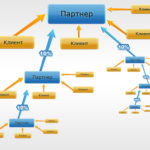111
222

Вступив в группу вы познакомитесь с собой. Это словно тишина в темноте
111
222
CSS-переменные, более известные как кастомные CSS-свойства, доступны в Chrome начиная с 49 версии. Они могут быть полезны для уменьшения количества повторяющегося кода в CSS, создания впечатляющих эффектов вроде смены тем на лету и, потенциально, создания полифилов для будущих возможностей CSS.
Обычная практика при разработке приложения — составить набор фирменных цветов, которые будут использоваться, чтобы поддержать единый стиль. Увы, многократное использование этих цветов в CSS не только является рутинной работой, но ещё и создаёт пространство для возникновения ошибок. Если в какой-то момент один из цветов нужно будет поменять, разработчик может неосторожно воспользоваться поиском и заменой по всему документу, что в большом проекте может быть довольно опасно.
В последнее время многие разработчики стали использовать CSS-препроцессоры типа SASS или LESS, которые решают эту проблему с помощью переменных. Хотя эти инструменты заметно увеличили продуктивность разработки, препроцессорные переменные имеют очень серьёзный недостаток: они статичны и не могут меняться на лету. Появление возможности динамически менять переменные не только позволит на лету менять темы сайта или приложения, но также означает значительное расширение возможностей отзывчивого дизайна и возможность создания полифилов для будущих свойств CSS. С выходом Chrome 49 переменные стали доступны в виде кастомных CSS-свойств.
Кастомные свойства расширяют наш CSS-инструментарий двумя новыми возможностями:
var() позволяет затем использовать эти значения в других свойствах.Краткий пример для демонстрации:
Статья полностью здесь
 Sunset or sundown, is the daily disappearance of the Sun below the western horizon as a result of Earth's rotation.
Sunset or sundown, is the daily disappearance of the Sun below the western horizon as a result of Earth's rotation.
The time of sunset is defined in astronomy as the moment when the trailing edge of the Sun's disk disappears below the horizon. Near to the horizon, atmospheric refraction causes the ray path of light from the Sun to be distorted to such an extent that geometrically the Sun's disk is already about one diameter below the horizon when sunset is observed.
Sunset is distinct from twilight, which has three phases, the first being civil twilight, which begins once the Sun has disappeared below the horizon, and continues until it descends to 6 degrees below the horizon; the second phase is nautical twilight, between 6 and 12 degrees below the horizon; and the third is astronomical twilight, which is the period when the Sun is between 12 and 18 degrees below the horizon.[1] Dusk is at the very end of astronomical twilight, and is the darkest moment of twilight just before night.[2] Night occurs when the Sun reaches 18 degrees below the horizon and no longer illuminates the sky,
Locations north of the Arctic Circle and south of the Antarctic Circle experience no sunset or sunrise on at least one day of the year, when the polar day or the polar night persists continuously for 24 hours.
Sunset creates unique atmospheric conditions such as the often intense orange and red colors of the Sun and the surrounding sky.
This value does not require the use of any frames. "_blank" is popular in web pages which are devoted to links to "other resources on the net".
 Вертикальное фото, отрабатываем разные варианты
Вертикальное фото, отрабатываем разные варианты
jQuery Masonry is the most popular solution to pull off this type of layout. It utilizes some pretty fancy JavaScript to reflow a series of divs.
Putting Masonry into practice is pretty easy, all you need is a container that holds a series of divs that you want to arrange masonry style. You can place anything you want inside the divs, in this case I threw in some placeholder images.
Once you have that in order, toss in jQuery and jQuery Masonry. Then you need to create a simple function that identifies your container and targets the class that we used for our Masonry images divs. Here’s a basic example
Masonry is a dynamic grid layout plugin for jQuery. Think of it as the flip-side of CSS floats. Whereas floating arranges elements horizontally then vertically, Masonry arranges elements vertically, positioning each element in the next open spot in the grid.
The result minimizes vertical gaps between elements of varying height, just like a mason fitting stones in a wall. This project lives on GitHub
 Широкоформатное фото. Далее много произвольного текста.
Широкоформатное фото. Далее много произвольного текста.
Masonry is a grid layout based on columns. Unlike other grid layouts, it doesn’t have fixed height rows. Basically, Masonry layout optimizes the use of space inside the web page by reducing any unnecessary gaps. Without this type of layout, certain restrictions are required to maintain the structure of layout.
Developers and designers are accustomed to seeing web pages laid out with CSS floats. But this common type of layout doesn’t take the size of the elements into consideration. Instead, it adds elements one after another, first in the horizontal direction, then vertically. The following image shows a typical web page that uses floats for layout



